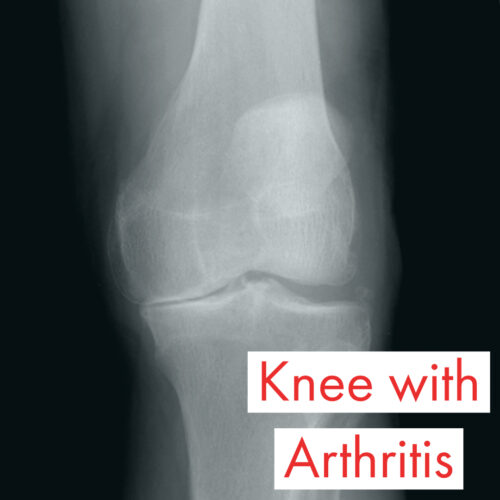
We treat a lot of knees at our clinic. Part of the reason is that knee injuries are so prevalent. Another reason is that, quite often, the other treatments patients receive only provide temporary relief. Plus, unhealed knee injuries often lead to painful knee arthritis.
When an injury is left untreated or when the treatment fails to repair an injury adequately, the knee becomes unstable. The instability sets the knee up for a cycle of abnormal joint motion. And that abnormal motion in the knee promotes degeneration and destroys the joint over time. All of that sets the knee up for the development of arthritis.
If you already have arthritis in your knee, we can help. If you have knee injuries such as a torn meniscus or ACL, we can help too! Regenerative Orthopedics are effective therapies capable of repairing the injury and stopping the cycle that leads to arthritis. Regenerative Orthopedics are ideal treatments for anyone looking to avoid knee replacement!
The knee is the largest joint in the body and one of the more complex joints. To accomplish all of the tasks the knee needs to do, many forces and stressors are placed on it.
A healthy knee moves smoothly during walking activities and also when running, jumping, and turning. One of the most important keys to a healthy knee is maintaining stability in response to the forces placed upon it. When any part of the knee joint is injured, such as the bony configuration, muscles, menisci, joint capsule, or ligaments, the whole stability of the knee is disrupted. And that can cause symptoms and pain.
When knee injury does occur, Regenerative Orthopedics stops the disruption and stabilizes the knee again. The treatment does this by promoting the healing of unstable and weakened ligaments. And it repairs the other injured joint structures too. The result is the elimination of the pain associated with knee conditions caused by abnormal joint motion.
Knee pain is one of the most common reasons people seek out medical help. And knee osteoarthritis is a primary player, impairing the mobility and activity level of those who suffer from it. The prevalence of knee pain increases with age. Plus, it is affected by lifestyle factors, such as obesity and lack of exercise. Arthritis patients deal with chronic pain, joint stiffness, structural damage, and the progressive loss of cartilage, which can be disabling.
Did you know the pain of arthritis does not come from the cartilage? Even though cartilage loss plays a central role in arthritis, it is not the source of pain. That’s because cartilage tissue does not contain nerve fibers. The tissue containing many nerve fibers includes the ligaments, tendons, meniscus, joint capsule, synovium, and periosteum. Arthritis pain is due to injury to these types of tissue.
Soft-tissue structures are mainly responsible for the smooth movement of the knee joint. But when abnormal forces are placed on them, injury occurs that disrupts the balance between normal motion and instability. This is where the painful process begins. The nerve endings that cause pain are also present where the ligaments and tendons insert into the bone. And this area can become a source of ongoing knee pain. Regenerative Orthopedic treatments are often directed at these sites and as such are recognized as one of the most effective non-surgical therapies to treat knee pain.
Ligaments play a crucial role in the knee’s stability because they guide the motion of the knee joints and restrain excessive motion to prevent dislocation. Ligament injuries are also the most common form of a knee injury. Ligament injury then upsets and disrupts the balance in the motion of the knee joint.
Injuries that result in ligament damage also commonly result in injury to other knee structures, such as the meniscus, tendons, and cartilage. As mentioned, these injuries can eventually lead to arthritis, which can transpire within a few years with severe injuries or possibly over decades if the injury is less severe.
Although many treatments may offer temporary pain relief, it is important to find a treatment that does more than chase the symptoms. It is important to repair the injured soft tissue to restore normal motion to the knee joint. Regenerative Orthopedic treatment options, such as Stem Cell Therapy, Platelet Rich Plasma, and Prolotherapy, are effective therapies that do just that.
These treatments stimulate the healing of ligaments, tendons, and menisci and restore normal functioning of the knee joint, thus preventing arthritic progression. In more advanced cases, the Gold Standard in Stem Cell Therapy can be used to promote the regeneration of articular cartilage.
Regenerative Orthopedic treatments target and repair the structures generating the pain in knee arthritis, effectively resolving the pain. These therapies give hope to people living with arthritis because they provide pain relief and joint repair, resulting in improved function and a better quality of life.